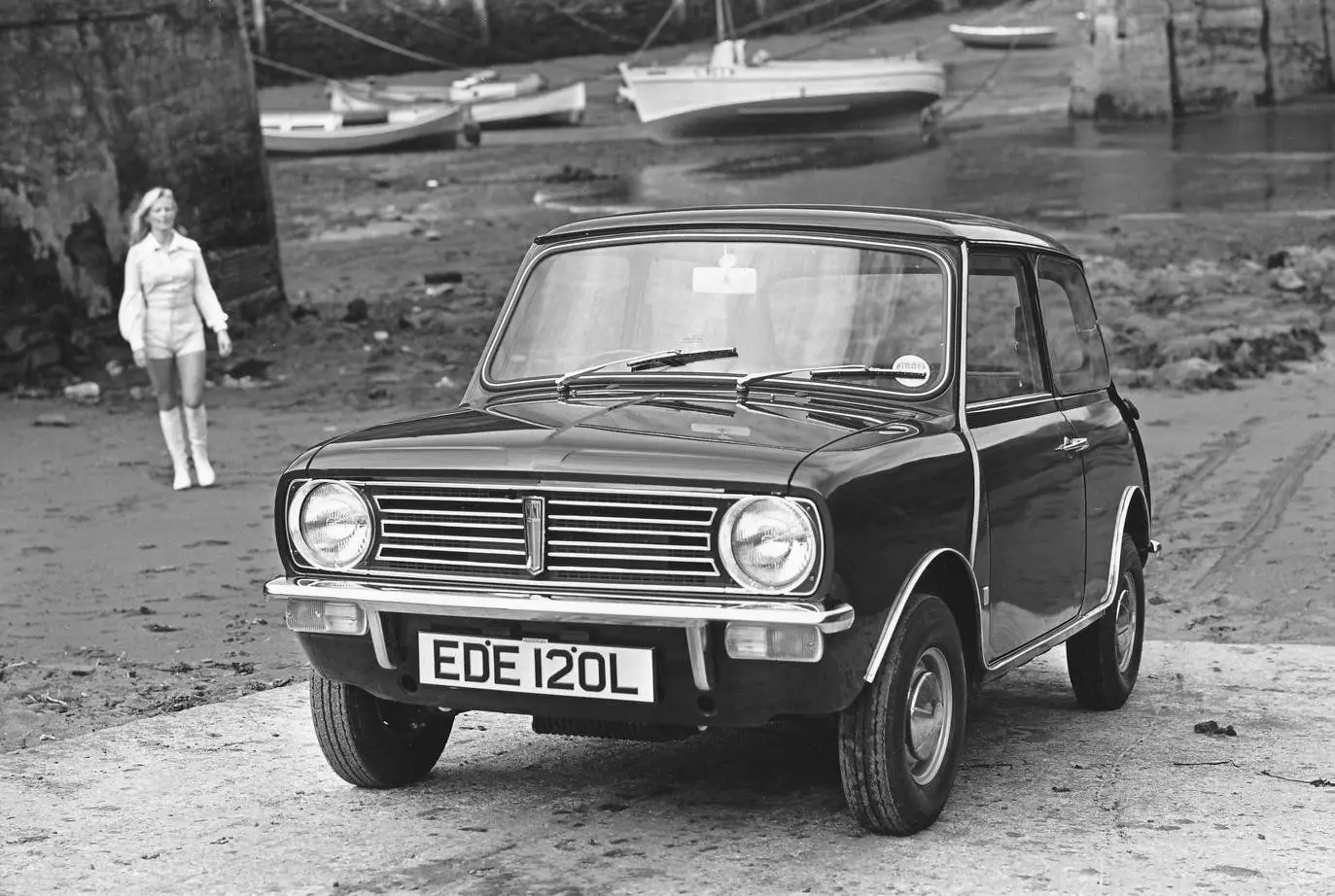THE MINI CLUBMAN; A CELEBRATION
11 November 2021
When the British Leyland Motor Corporation launched the Clubman in October of 1969, the copywriters worked overtime. There were references aplenty to its size, not to mention “For the first time a Mini has wind up windows in padded doors”, which was slightly economical with the truth. Australian built models lost their sliding panes as early as 1965, as did the Riley Elf and Wolseley Hornet Mk. III in the following year.

Today, it seems the Clubman is slightly overlooked compared with its 1275GT stablemate. Both shared Roy Haynes’s ‘long nose’ styling, but while the former replaced the Cooper Mk. II, the latter succeeded the Elf and the Hornet. Power was from the 998cc A Series, and the instruments were now placed in front of the driver. The specification further included a carpeted floor and fresh air vents. Such luxury cost a mere £720 6s 11d, and you could even throw caution to the winds and specify reclining front seats for another £16 6s 5d.
What the typical Clubman owner (think of a younger Margot Ledbetter) gained over and above the ‘round nose’ 1000 Mk. III was a sense of superiority, plus greater engine accessibility for those weekend repairs. . BLMC also took the opportunity to further streamline the Mini range by succeeding the Austin Countryman and Morris Traveller Mk. II with a Clubman Estate.
Motor headlined its report of the 18th October 1969 with “At last – a comfortable Mini”. They also, rather ominously, pointed out, “Regular readers will probably have noted our recent waning enthusiasm for Mini motoring”. However, the new models offered “a dramatic overall improvement in both creature comforts and drivability. No longer is a long Mini journey something of an endurance test”.
In other words, the Clubman was a very welcome addition to the line-up, but Leyland’s problems mean the Mini remained largely undeveloped for much of the 1970s. For example, 1971 saw the Clubman dispense with Hydrolastic suspension, and in 1975 the manual gearbox models came with the 1,098cc engine; the 998cc unit still used on the automatic versions.
The following year saw a facelift, with owners revelling in adjustable front seat backrests and nylon upholstery. As for the Estate, it now boasted twin coach lines, disappointing those connoisseurs of naffness who much appreciated the older version’s Formica ‘wood’ decorations. Unfortunately, the Mini competed with the Renault 5, the Fiat 127 and the Honda Civic. Meanwhile, 1977 marked the UK introduction of the Ford Fiesta
Fitting the Clubman with a hatchback is a tempting idea, but BL’s financial issues meant this was always going to be a fantasy. Instead, they continued to improve the standard equipment with a dipping mirror, reversing lamps, tinted glass and flamboyant new wheel trims. Raymond Baxter illustrated the Clubman’s many advantages of the latest model to BL dealers:
While The Two Ronnies starred in a very entertaining television commercial:
The debut of the Metro in 1980 resulted in the demise of the Clubman saloon. However, the Estate, now badged as the ‘1000 HL’, remained on sale until as late as 1982. And perhaps the most entertaining memory of this intriguing member of the Mini family is the account in The Times of the launch film:
This features three of the new super-minis complete with RAF red, white and blue roundels and driven by heavily moustached types wearing flying helmets circa Battle of Britain. Performing suitably intricate manoeuvres they chase and destroy an enemy, who disappears in a cloud of bright green smoke. Unfortunately, the enemy – despite his huge black Luftwaffe crosses – is clearly identifiable as a Ford Anglia.
Let us hope a copy of this remarkable feature survives in the BFI archive.
Why choose Lancaster Insurance?
Here at Lancaster, we love classic cars as much as you do and we understand what it takes to protect them for future generations.
We have links with some of the top classic car clubs around the country and some of our policies even offer discounts of up to 25% for club members.
Other benefits of classic car insurance through Lancaster can include:
- Historic rally cover
- Static show cover
- Limited mileage discounts
- Choice of repairer
- 24-hour claims helpline
Give your classic the protection it deserves and get a quote for your classic today.
